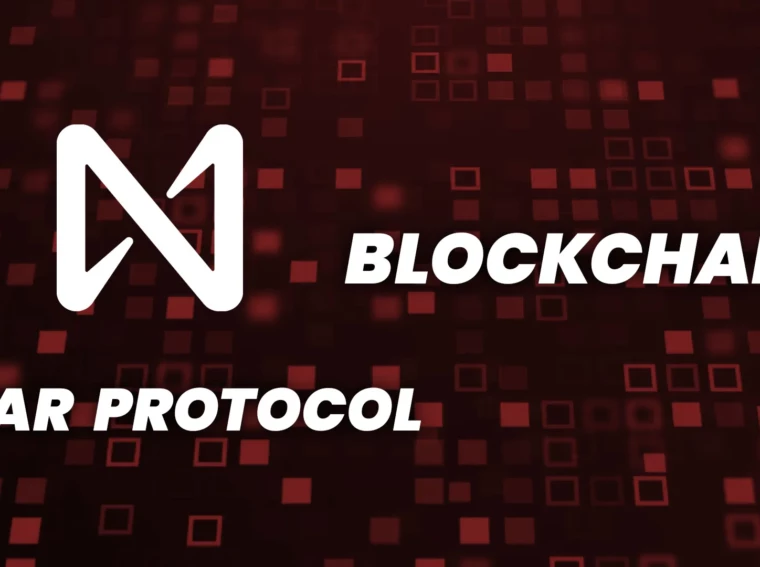- Near Protocol is a decentralized, high-performance blockchain platform
- Near Protocol offers higher scalability and better interoperability between blockchain networks.
- Near Protocol offers a promising alternative to other blockchain platforms.
Because Blockchain technology is always developing by adding new features to its platforms, the state of the technology can change just as quickly as the state of technology in general. The state of Blockchain technology is subject to rapid change, much like the state of technology as a whole. Despite this, new frameworks are constantly being created, so business owners today have a wide range of blockchain platforms to select from.
Blockchain was an innovative technology that first gained traction in the financial sector before spreading to other sectors. This created a wealth of options and necessitated the creation of Blockchain-based apps. With the proper Blockchain platform, businesses may take advantage of the technology’s full potential in the most practical way.
Overview of Near Protocol
Near Protocol is a decentralised, high-performance blockchain platform created to give decentralised applications (dApps) a scalable and user-friendly environment. It tries to address some of the major issues with scalability, high fees, and sluggish transaction rates that current blockchain networks suffer.
- Sharding
The Near Protocol uses sharding, a method that divides the blockchain network into more manageable chunks known as shards. Because each shard can handle transactions on its own, the network’s performance is considerably increased.
- PoS or Proof-of-Stake Consensus
Near employs a proof-of-stake (PoS) consensus mechanism that enables validators to produce and approve new blocks in accordance with their stake in the network. Compared to the proof-of-work (PoW) method employed by platforms like Bitcoin, this strategy uses less energy.
- Rainbow Bridge
The “Rainbow Bridge” provided by the Near Protocol enables users to move assets and data between Near and other blockchain networks, promoting interoperability between various ecosystems.
- Simple Account Model
By abstracting away the blockchain’s intricacies, Near’s account model makes it easier for developers and end users to use dApps and enroll users.
Comparison with Other Blockchain Platforms
Ethereum
- Scalability
Near Protocol’s sharding architecture provides higher scalability compared to Ethereum’s current PoW-based model. Ethereum is working on transitioning to Ethereum 2.0, which will introduce PoS and sharding for scalability improvements.
- Gas Fees
Near’s focus on scalability aims to reduce gas fees significantly, whereas Ethereum has struggled with high gas fees during times of network congestion.
- Development Environment
Near’s simple account model and developer-friendly tools make it easier for developers to build dApps, whereas Ethereum’s Solidity programming language can be more complex for newcomers.
- Ecosystem Maturity
Due to its early acceptance and larger community, Ethereum has a more mature ecosystem with a larger number of dApps and projects.
Binance Smart Chain (BSC)
- Centralisation
While BSC has come under fire for its more centralised validator set and governance approach, which could affect security and censorship resistance, Near Protocol places an emphasis on decentralisation.
- Performance
Theoretically, Near’s PoS consensus and sharding should offer superior performance to BSC’s PoW-based architecture, particularly during periods of intense network activity.
- Interoperability
While BSC largely concentrates on its own ecosystem, Near’s Rainbow Bridge enables smooth asset transfers between other blockchains.
Polkadot
- Interoperability
Polkadot’s architecture leverages para chains and bridges to accomplish this purpose, although Near also emphasizes the importance of interoperability between blockchains.
- Mechanism of Agreement
PoS consensus processes are used by Near and Polkadot, however Polkadot’s Nominated Proof-of-Stake (NPoS) differs in some ways from Near’s.
- Ecosystem and Adoption
Polkadot’s Substrate structure gives them access to a larger ecosystem of linked blockchains and initiatives, which can promote increased adoption and cooperation.
Solana
Scalability and speed Solana is regarded as one of the quickest blockchain systems because to its high throughput and minimal latency. Sharding in the Near Protocol tries to provide comparable scalability advantages.
Ecosystem Maturity: At the time of my most recent update, Solana has experienced rapid growth and adoption, drawing a variety of decentralized applications and initiatives that might have an impact on user preferences.
Conclusion
Top blockchain systems including Ethereum, EOS, TRON, Tezos, and Hyperledger Fabric are all excellent choices for developing smart contracts. Fast transaction speeds, low transaction costs, a wealth of developer communities and resources, and a strong focus on enterprise use cases are just a few of the characteristics and tools that these platforms provide that make them well-suited for the development of smart contracts and decentralized apps (dApps).

